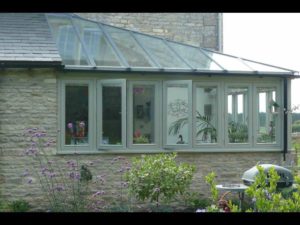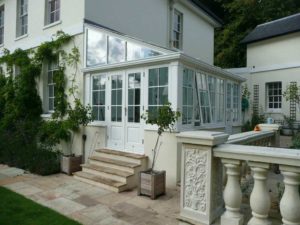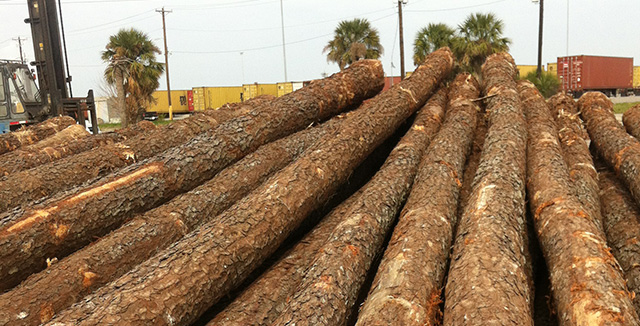Advantages and Disadvantages of Pine Wood for Conservatories
“What are the main advantages and disadvantages of using Pine for a Conservatory?.”
Pine Conservatories are a great extension to any home and usually add value to your property. You may have had a look at the Orangeries UK website and seen both high-quality hardwood and pine conservatories available.
The obvious benefits of hardwood are its durability and elegance. Pine conservatories do have a number of benefits too though, particularly compared to PVC (Poly Vinyl Chloride). See below for considerations when considering purchasing a pine conservatory.
 |
 |
 |
Properties of Pine
Pine is a softwood that has over 100 species all around the world. Pine is white or pale yellow in colour and is also light weight, with an open grain.

| Advantages of Pine | Disadvantages of Pine |
| Relatively inexpensive compared to other types of wood | Common Lumber often has Defects |
| Does Not Require Reenforcement | Can contain knots and other imperfections that may affect its appearance and structural integrity |
| Lightweight and easy to work with | Susceptible to Scratches and Dents |
| Resists Shrinking & Swellling | Can be easily damaged |
| Good Elasticity | Not as durable as hardwoods |
| Attractive Grain Options | Prone to warping and twisting if not properly dried and cured |
| Abundant and readily available | Susceptible to insect damage and rot if not treated or maintained properly |
| Takes paint and stain well | May yellow over time if exposed to sunlight. |
| Has a distinctive grain pattern | |
Types of Pine Wood
There are various types of conifer in the Genus Pinus. The scientific name for the Pine specie is Pinus, the higher classification is Pinacae. Some of the most common types of Pine include:
|
|
Eastern White Pine: This type of pine wood is native to the northeastern United States and eastern Canada. It is known for its soft, light-colored wood that is easy to work with and takes stain well. Eastern white pine is often used for furniture, trim, and paneling.
Ponderosa Pine: Ponderosa pine is a softwood tree that is native to western North America. It is a popular choice for construction lumber, as it is strong and durable. Ponderosa pine is also used for furniture, cabinets, and paneling.
Lodgepole Pine: Lodgepole pine is another softwood tree that is native to western North America. It is known for its straight grain and consistent color, making it a popular choice for furniture, paneling, and cabinetry.
Southern Yellow Pine: Southern yellow pine is a group of pine species that are native to the southeastern United States. It is a strong and durable wood that is often used for construction, decking, and fencing.
Radiata Pine: Radiata pine is a fast-growing softwood tree that is native to California and Chile. It is often used for furniture, cabinets, and paneling due to its consistent color and straight grain.
Advantages of Pine Conservatories
The first advantage of opting for a pine conservatory is ultimately that it is a cheaper and more affordable option than hardwood. Choosing pine may mean that you can actually have a conservatory extension on your home, rather than not having one at all.
Pine has ample structural strength. Therefore, like all timbers, pine doesn’t require reinforcement. PVC, on the other hand, is a weaker material used for conservatories that does need reinforcing.
In addition, compared to PVC, pine is a renewable resource and therefore better for the environment. Although hardwood is also renewable, if hardwood is too expensive an option for your conservatory, then pine is a better option for the environment over PVC.
What’s more, pine, like all timbers, can be moulded into different shapes to suit individual requirements and styles. It can also be painted in a solid colour or in a translucent stain to emphasise the distinctive grain. Pine, similarly to hardwood, pine creates a traditional appearance that suits both modern and period properties.
To summarise the benefits of pine wood:
✅ Aesthetics:
Pine wood is known for its natural beauty and unique grain pattern. It has a warm, rustic look that can add character and charm to a conservatory. It can also be stained or painted to match any decor style.
✅Affordability:
Pine wood is one of the most affordable types of wood, making it an attractive option for those on a budget. It is widely available and easy to work with, which helps to keep costs down.
✅Durability:
When properly maintained and treated, pine wood can be quite durable. It is resistant to warping and cracking, and can stand up to the moisture and humidity often found in conservatories.
✅Sustainability:
Pine wood is a renewable resource, meaning that it can be harvested and replanted without depleting the environment. It is also biodegradable and can be easily recycled or repurposed.
✅Insulation:
Pine wood is a good insulator, helping to keep the conservatory warm in the winter and cool in the summer. This can help to reduce energy costs and make the conservatory more comfortable year-round.
Disadvantages of Pine Conservatories
Pine needs to be correctly and carefully treated with strong preservatives in order to prevent rot. Therefore, although hardwoods are more expensive, they do not require such extensive treatment.
What’s more, pine, as a softwood, can be damaged more easily and can have the tendency to be prone to movement compared to all other timber, for example, shrinking and swelling when seasons change, due to higher and lower levels of moisture, which can cause problems with paintwork.
Pine conservatories from Orangeries UK are treated with preservatives in order to extend the wood’s durability for outside use.
To summarise the cons of pine wood:
❌Softness:
Pine wood is a relatively soft wood, which means it is more prone to dents, scratches, and other types of damage. This can be a concern in a high-traffic area like a conservatory, where furniture and other items may be moved around frequently.
❌Maintenance:
Pine wood requires regular maintenance to keep it looking its best. It should be treated with a sealant or protective coating to prevent moisture damage, and may need to be sanded or refinished periodically.
❌Insect and fungal damage:
Pine wood is susceptible to damage from insects like termites, as well as fungal growth like mold and rot. This can be a concern in a humid environment like a conservatory, where moisture levels can be high.
❌Knots and imperfections:
Pine wood can have knots, sap pockets, and other imperfections that may affect its appearance and structural integrity. Careful selection and inspection of the wood before installation can help to minimize these issues.
❌Longevity:
While properly maintained pine wood can be quite durable, it may not be as long-lasting as some other types of wood. This can be a concern for those looking for a conservatory that will last for decades without needing significant repairs or replacement.
How is Pine Wood Treated to Prevent Rot?
Pressure-treated:
Pine wood can be pressure-treated with preservatives that help to protect against rot, decay, and insect damage. The preservatives are forced deep into the wood fibers under high pressure, which helps to ensure long-lasting protection.
Borate-treated:
Borate-treated pine wood is treated with a borate solution that helps to prevent fungal decay and insect damage. The solution is applied to the surface of the wood and penetrates into the fibers, providing long-lasting protection.
Chemical preservatives:
Pine wood can be treated with chemical preservatives that help to prevent decay and insect damage. These preservatives are applied to the surface of the wood and penetrate into the fibers to provide long-lasting protection. Some of the chemicals used to treat pine include:
Chromated copper arsenate (CCA), Alkaline copper quat (ACQ), Copper azole (CA), Creosote, Pentachlorophenol (Penta)
Sealants:
Pine wood can be treated with a sealant or protective coating that helps to prevent moisture damage and decay. The sealant is applied to the surface of the wood and helps to create a barrier against water and other environmental factors.
Stains and paints:
Pine wood can be treated with a stain or paint that helps to protect against moisture damage and decay. These treatments help to seal the surface of the wood and prevent water from penetrating the fibers.
Pine or Hardwood?
At Orangeries UK, we believe that hardwoods like Sapele and Oak are more durable and high-quality than pine. That said, pine makes an affordable, effective material for orangeries and conservatories.
To discuss the possibility of installing a pine conservatory or hardwood conservatory, call Orangeries UK on 0333 335 5051.
Pine Wood Frequently Asked Questions
What are the weaknesses of pine wood?
Pine wood weaknesses: prone to scratches, dents, and decay if not treated properly; not as strong as hardwoods; vulnerable to insect attacks.
Author: Daniel Foley Carter
BIO:
Daniel Foley Carter has 10 years experience in the joinery and wood fabrication sector. Daniel has written for major publications such as House and Home, Timber Weekly and Construction UK. Daniel has worked with a large number of construction and wood work projects and has extensive experience with wood properties, wood selection and the utilisation of wood in home extensions and construction.
